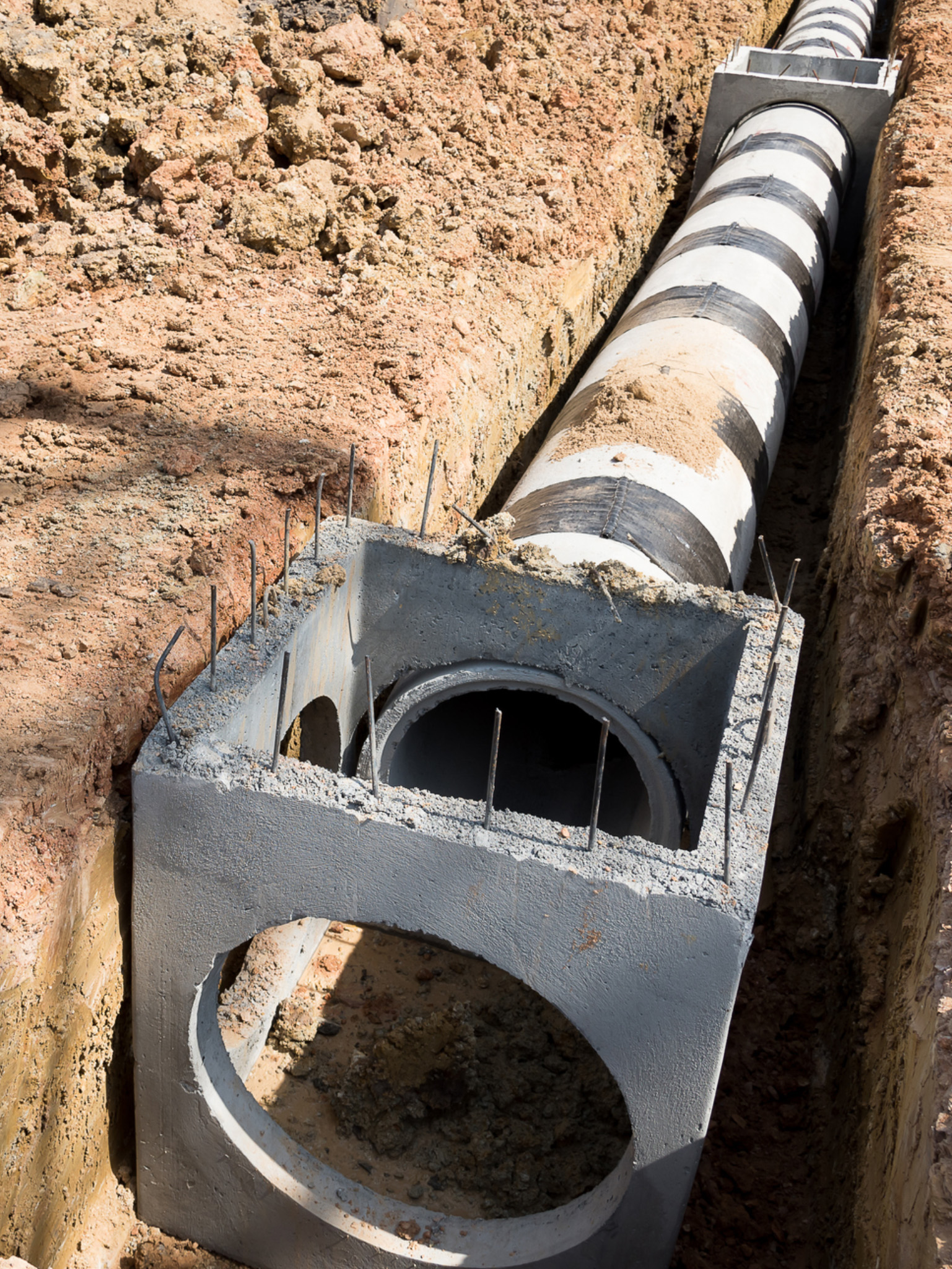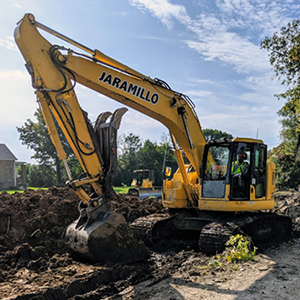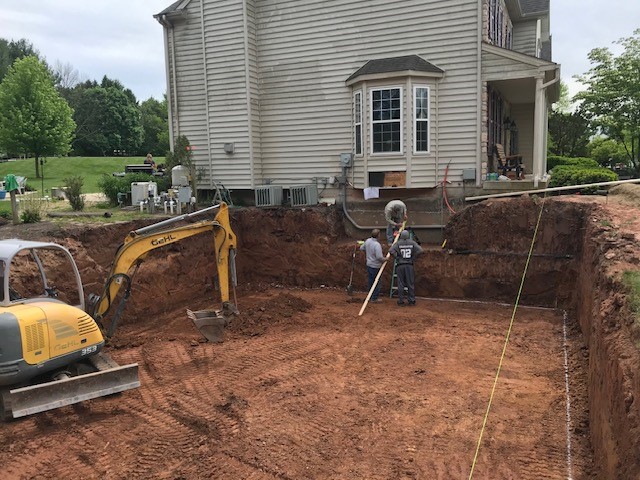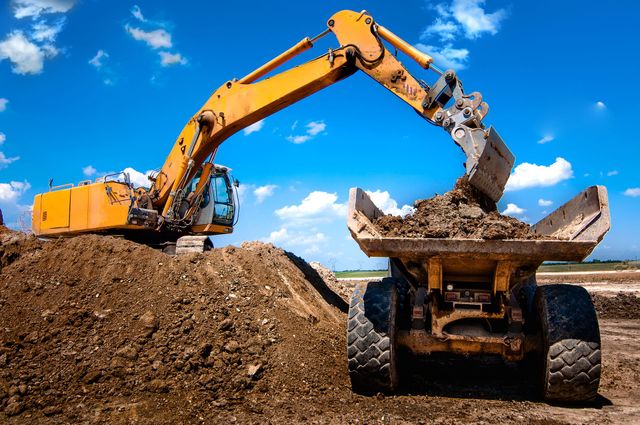Extensive Exploration: The Scientific Research Behind Superior Excavation Practices
The world of excavation methods is a domain name where science links with craftsmanship to uncover the secrets concealed below the earth's surface area. From old hand devices to modern-day hydraulic excavators, the advancement of excavation techniques has been a testament to human ingenuity and technological improvements. What genuinely establishes remarkable excavation methods apart is a deep understanding of geological concepts, combined with the use of sophisticated devices and techniques. By discovering the scientific research behind these methods, we can discover the secrets that lie beneath our feet and value the accuracy and proficiency that go into every dig.
Evolution of Excavation Strategies
Throughout background, the development of excavation techniques has actually played a crucial duty in advancing construction techniques and archaeological explorations. From the fundamental tools made use of by our ancestors to the sophisticated equipment employed in modern-day times, the progression of excavation approaches has significantly changed how we come close to various tasks.
In ancient times, manual labor with fundamental devices such as shovels, wheelbarrows, and pickaxes was the key technique of excavation. This labor-intensive process restricted the depth and scope of excavations, usually causing slow progression and restricted access to particular sites. As worlds progressed, so did the techniques and tools utilized for excavation.
The Industrial Change noted a transforming factor in excavation practices with the introduction of steam-powered equipment. In modern times, modern technology plays an essential role in excavation, with developments like GPS systems, drones, and 3D scanning improving precision and effectiveness in the field.
Role of Innovation in Excavation

The assimilation of sophisticated innovation has fundamentally changed the area of excavation, improving precision and performance to unmatched levels. Among the crucial technological innovations that has actually considerably impacted excavation techniques is the use of GPS systems. These systems permit exact mapping of excavation sites, enabling operators to properly find below ground utilities and frameworks. Furthermore, using telematics in excavation tools has made it possible for real-time tracking of machine efficiency, resulting in aggressive maintenance and raised operational performance.
Moreover, the advent of 3D modeling and simulation software application has structured the planning process for excavation jobs. Designers and operators can currently envision the entire excavation process prior to damaging ground, maximizing and identifying potential difficulties process. In combination with this, the implementation of drones in excavation activities has assisted in airborne studies, volumetric dimensions, and website examinations with unmatched speed and accuracy.
Geological Principles in Excavation
An understanding of geological concepts is crucial for ensuring the structural integrity and stability of excavation sites. Geological aspects play an essential role in determining the feasibility and safety of excavation projects (excavating ohio). One essential geological principle to think about is the type of soil or rock existing at the website. Various dirt types, such as crushed rock, sand, or clay, have differing degrees of security and require different excavation techniques. Natural soils like clay may call for extra support to prevent collapses, while sandy dirts might be prone to disintegration throughout excavation.
Furthermore, the geological framework of the location, including mistakes, cracks, and rock formations, must be thoroughly evaluated to identify prospective dangers and difficulties. Excavating near geological fault or unsteady rock developments can result in instability and prospective hazards. By performing detailed geological surveys and evaluation, engineers and excavators can develop methods to reduce threats and guarantee the effective completion of excavation jobs. Inevitably, integrating geological concepts into excavation methods is crucial for accomplishing secure, efficient, and lasting outcomes.

Most Current Devices for Excavation
In the realm of excavation techniques, modern technologies in devices have reinvented the effectiveness and accuracy of excavation processes. One of the current tools making waves in the sector is making use of drones furnished with sophisticated imaging innovation. These drones can supply in-depth aerial surveys of excavation websites, supplying real-time information on topography and prospective hazards. This details a fantastic read help in much better planning and decision-making throughout the excavation procedure.
An additional cutting-edge tool obtaining appeal is the pop over to this site implementation of 3D printing modern technology for producing customized excavation equipment. This permits the manufacturing of specialized tools that are customized to the details demands of a project, enhancing performance and lowering downtime.
Moreover, innovations in materials scientific research have actually resulted in the advancement of more powerful and more long lasting excavation devices. lancaster trenching. Tungsten carbide-tipped excavator attachments, for instance, deal exceptional efficiency in difficult ground conditions, enhancing efficiency on-site
Science's Effect on Excavation Practices

In addition, scientific research on dirt mechanics and geotechnical design has offered valuable insights into soil behavior, permitting excavation experts to make informed decisions concerning excavation methods and soil stablizing methods. Generally, science proceeds to drive advancement and improvement in excavation methods, making excavation projects more reliable, cost-efficient, and lasting.

Verdict
To conclude, the evolution of excavation strategies has been considerably influenced by innovations in innovation and a much deeper understanding of geological concepts. The current tools and equipment made use of in excavation have actually enhanced efficiency and precision in the field. The application of clinical expertise has significantly enhanced excavation techniques, resulting in a lot more sustainable and efficient techniques for excavating various kinds of products.
In the realm of excavation practices, contemporary developments in devices have actually changed the performance and accuracy of excavation processes. By leveraging scientific concepts, the excavation market has been able to considerably improve efficiency, precision, and security in excavation processes. GPR allows excavation groups to non-invasively scan and map subsurface structures, energies, and prospective risks, enabling them to intend excavation you can find out more jobs with greater accuracy and minimized danger of accidents.
In addition, scientific study on dirt mechanics and geotechnical design has provided beneficial understandings into dirt behavior, permitting excavation experts to make informed choices concerning excavation approaches and soil stablizing methods. Overall, scientific research continues to drive technology and enhancement in excavation techniques, making excavation jobs more effective, cost-effective, and lasting.